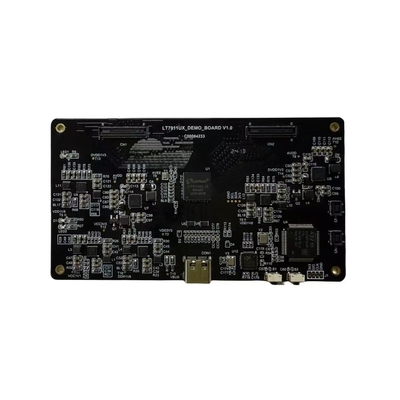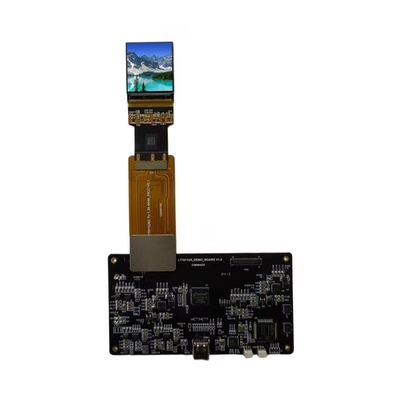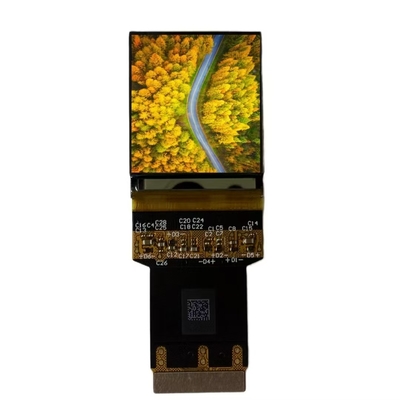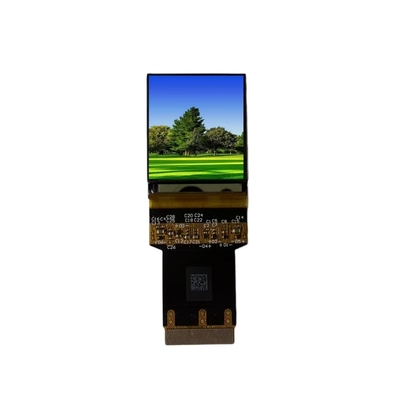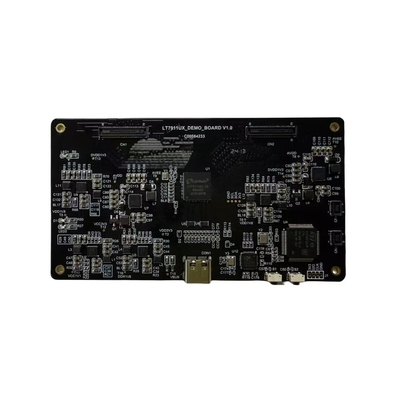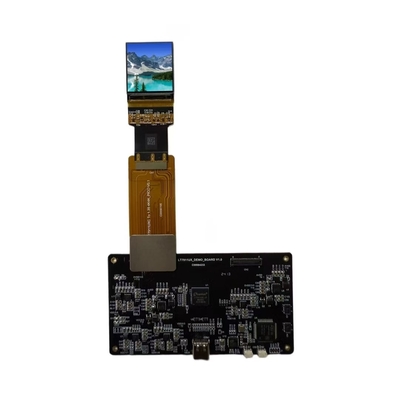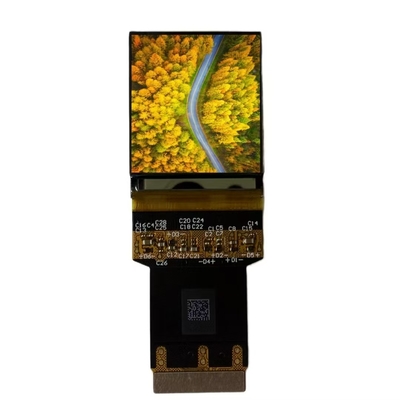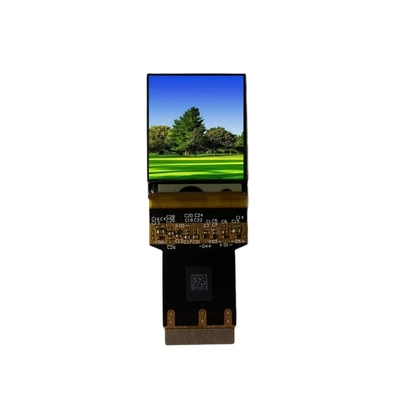-
Màn hình LCD TFT
-
Màn hình cảm ứng Màn hình TFT
-
Màn hình TFT tròn
-
Loại thanh TFT
-
Màn hình TFT vuông
-
Màn hình LCD độ sáng cao
-
Màn hình LCD COB
-
Ánh sáng mặt trời có thể đọc được TFT
-
Màn hình UART TFT
-
Màn hình LCD ký tự
-
Mô-đun LCD ma trận điểm
-
Màn hình LCD phân đoạn
-
Màn hình PMOLED
-
Mô-đun hiển thị AMOLED
-
Hiển thị giấy
-
Màn hình kỹ thuật số LED
-
Bảng điều khiển cảm ứng điện dung
Mô-đun hiển thị micro OLED 1.35 inch, độ phân giải 3552x3840, giao diện MIPI+SPI, 1200 C/D cho hiển thị tối ưu

Liên hệ với tôi để lấy mẫu miễn phí và phiếu giảm giá.
WhatsApp:0086 18588475571
wechat: 0086 18588475571
Ứng dụng trò chuyện: sales10@aixton.com
Nếu bạn có bất kỳ mối quan tâm nào, chúng tôi cung cấp trợ giúp trực tuyến 24 giờ.
x| Display Technology | MICRO OLED display | name | oled panel |
|---|---|---|---|
| size | 1.35" | resolution | 3552x3840 |
| Brightness | 1200c/d | interface | MIPI+SPI |
| Color Mode | RGB/MONO-G |
1. Mô-đun hiển thị micro oled 1.35 inch Độ phân giải 3552x3840 Giao diện MIPI+SPI 1200 C/D Cho Hiển thị Tối ưu
A: Thông số sản phẩm
| Mã sản phẩm: | HX135KDP-NM2 |
| Chế độ hiển thị | micro OLED 1.35" |
| Kích thước phác thảo (mm) | 25.55*32.02 |
| Kích thước AA (mm) | 24.65×25.1264 |
| Điểm hiển thị | 3552x3840 |
| Góc nhìn | tất cả |
| Độ sáng | 1200c/d |
| Giao diện | MIPI+SPI |
| Tỷ lệ tương phản | 100000:1 |
B: Hình ảnh sản phẩm
![]()
![]()
![]()
![]()
C: Bản vẽ & Định nghĩa chân
![]()
D: Kiến thức sản phẩm Oled
Ưu điểm của OLED:
Bộ OLED nhẹ hơn và mỏng hơn so với LCD, độ tương phản cao, độ bão hòa màu cao, tiêu thụ thấp hơn
Nhược điểm của OLED
AMOLED cực kỳ đắt so với LCD và TFT, tuổi thọ ngắn hơn so với LCD và TFT
E. Thông tin công ty
Lợi thế của Huaxin:
1. Cơ sở nhà máy đặt tại thành phố nội địa có chi phí hiệu quả
2. Thiết bị mới tiên tiến nhất có thể giữ chất lượng ổn định
3. Hầu hết các quy trình sử dụng thiết bị tự động hoàn toàn, có hiệu quả và chất lượng ổn định
4. Các kỹ sư và lãnh đạo sản xuất chuyên nghiệp, những người đã làm việc trong lĩnh vực LCD hơn 20 năm
5. Tự thiết kế cho sản phẩm tùy chỉnh
chứng chỉ của chúng tôi
1.ISO14001/
2.ISO9001/IATF16949
3.SGS của mô-đun LCD
- Huaxin Technology (Enshi)Co.,LTD
- Hồ Bắc.Enshi
- Ngày thành lập: 2009
- doanh nghiệp công nghệ cao chủ yếu làm việc về nghiên cứu và phát triển, sản xuất và bán LCD, LCM, TFT, đèn nền, OLED
- LCD bao gồm: VA, TN, HTN, STN, FSTN, CSTN và các dòng khác
- LCM bao gồm: COB, TBA, COG, TP, đèn nền LED và các dòng khác
- vốn đăng ký: hai mươi triệu
- nhân viên hiện tại: 500+
- RD chiếm 10%
- QC chiếm 15%
F: Năng lực sản xuất
| Sản lượng hàng năm Năng lực |
2021 (Hiện tại) | 2022 (Mục tiêu) | 2023 (Thử thách) | 2024 (Thử thách) | 2025 (Thử thách) | Ghi chú | ||
| Sản xuất LCD Năng lực |
4.5 | 9 | 9 | 9 | 9 | Đơn vị: hàng nghìn logarit/Ngày |
||
| Sản xuất LCM Năng lực |
70 | 150 | 300 | 450 | 450 | Đơn vị: Hàng nghìn chiếc/Ngày |
||
| Sản xuất đèn nền Năng lực |
100 | 200 | 300 | 500 | 500 | Đơn vị: Hàng nghìn chiếc/Ngày |
||
| Sản xuất OLED Năng lực |
10 | 20 | 30 | 40 | 50 | Đơn vị: Hàng nghìn chiếc/Ngày |
||
G: Ứng dụng sản phẩm
1. hộp an toàn & dụng cụ
2. khóa & nhà thông minh
3. máy phát & đồng hồ
4. đồng hồ & radio
5. bộ chuẩn trực & bộ điều hướng
H: Đặc điểm hiển thị AMOLED
1. Điểm ảnh tự phát:
2. Tỷ lệ tương phản:
3. Độ chính xác và độ sống động của màu sắc:
4. Góc nhìn:
5. Hiệu quả năng lượng:
6. Độ mỏng và linh hoạt:
7. Thời gian phản hồi:
I: Hiệu quả năng lượng của màn hình AMOLED so với các công nghệ hiển thị khác như thế nào?
1. Tiêu thụ điện năng:
- Màn hình AMOLED tiêu thụ điện năng trên cơ sở mỗi pixel, có nghĩa là các pixel hiển thị nội dung đen hoặc tối tiêu thụ rất ít điện năng, trong khi các pixel hiển thị nội dung sáng hoặc trắng tiêu thụ nhiều điện năng hơn.
- Mặt khác, màn hình LCD và LED yêu cầu đèn nền liên tục tiêu thụ điện năng bất kể nội dung hiển thị.
2. Phụ thuộc vào nội dung:
- Màn hình AMOLED tiết kiệm điện hơn đối với nội dung có nhiều vùng tối hoặc đen, vì các pixel riêng lẻ có thể được tắt để tiết kiệm điện.
- Màn hình LCD và LED tiêu thụ một lượng điện năng tương đối không đổi bất kể nội dung hiển thị, vì đèn nền vẫn hoạt động.
3. Điều khiển độ sáng:
- Màn hình AMOLED có thể điều chỉnh động độ sáng của các pixel riêng lẻ, cho phép tiết kiệm điện năng tốt hơn trong các tình huống độ sáng thấp.
- Màn hình LCD và LED thường có độ sáng đèn nền cố định, điều này có thể dẫn đến tiêu thụ điện năng cao hơn ngay cả khi nội dung hiển thị không yêu cầu độ sáng tối đa
4. Kích thước hiển thị
- Màn hình AMOLED có xu hướng tiết kiệm điện hơn đối với các kích thước hiển thị nhỏ hơn, vì mức tiêu thụ điện năng tăng theo số lượng pixel.
- Màn hình LCD và LED lớn hơn có thể yêu cầu đèn nền tiêu tốn nhiều điện năng hơn, có khả năng làm giảm hiệu quả năng lượng của chúng so với màn hình AMOLED có cùng kích thước.



